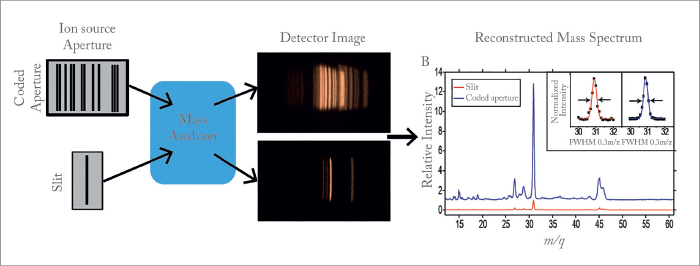A “miniaturized” mass spectrometer promising higher resolution and more sophisticated detection is being developed by a team at Duke University, NC, USA. Jeffrey Glass, professor of electrical and computer engineering and lead researcher, has been working on the development of this high-resolution miniature mass spectrometer, and says that the benefits are likely to have a broad reach, from point-of-care applications to space travel. Here he tells us more about the development of coded aperture MS – and why this technology is welcome news.

References
- ZE Russell et al., “Compatibility of spatially coded apertures with a miniature Mattauch-Herzog mass spectrograph”, JASMS, 27 (4), 578-84 (2016). DOI: 10.1007/s13361-015-1323-7




